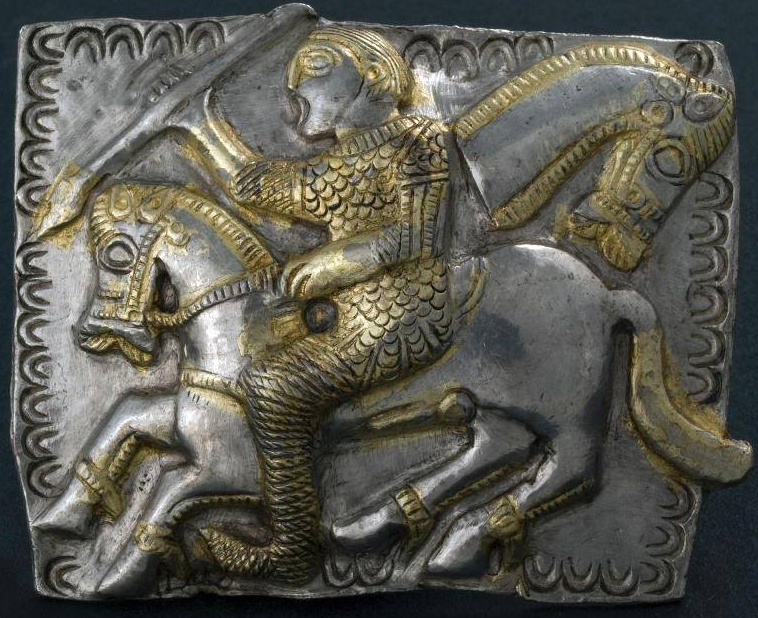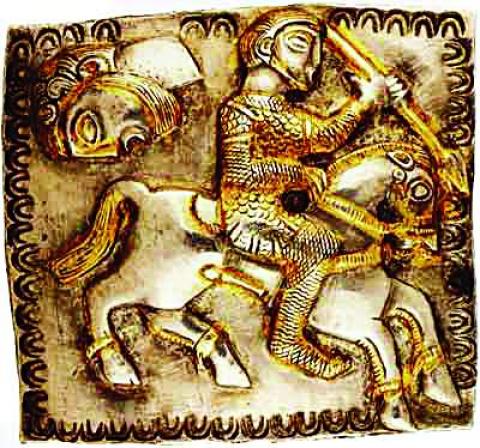
Thread: Tărtăria tablets are three clay tablets discovered in a Vinča-Turdaș culture (en.wikipedia.org/wiki/Vin%C4%8D…) settlement near the village of Tărtăria in Romania... 

The tablets were discovered in a sacrificial pit with many other clay objects and human bones. The radio carbon dating of the bones produced the dates 6310 ± 65 yr BP (calibrated 5370-5140 BC) academia.edu/2365429/SETTLI… 

The reason why these tablets are so important is that they contain the Vinča (Old European) symbols.
persee.fr/docAsPDF/dha_0…
persee.fr/docAsPDF/dha_0…

But on Tărtăria tablets they are engraved in such a way as to imply that these symbols can be interpreted as groups...Like a script??? Script which predates Sumerian proto-writing by thousands of years...
By the way, Tărtăria tablets are not the only objects where we find these symbols engraved in sequences...Hence the proposal that this is indeed a kind of script...
Which is why everyone is so edgy about this and why so many people put so much effort into discrediting these tablets...Surely it can't be that proto-writing originated in the Balkans...
And "if" indeed these "so called" Vinča symbols are genuine, "they are surely a local isolated development and have nothing to do with the development of writing in Mesopotamia"..."The similarities are purely coincidental"...
Those who still see Sumerian culture as an isolate without any external influences won't like this blog post or any of the other blog posts linked from it
oldeuropeanculture.blogspot.com/2020/05/scribe…
oldeuropeanculture.blogspot.com/2020/05/scribe…
But here I would like to pour some really really cold water on the "who invented the first symbolic script" debate...I would like to look closely at one of the Tărtăria tablets. Not one of the two "cool" ones with holes, which seem to have been made to be used together... 

I would like to look at the often ignored third tablet...This one...And I would like to say this: O MY GOD!!! How could I have been so blind! 

What I think is depicted on this tablet is from right to left: 1. Ibex goat
2. Grain
3. A person who looks like he is bent forward...like as if he is working the land...maybe planting grain???
2. Grain
3. A person who looks like he is bent forward...like as if he is working the land...maybe planting grain???
Now if this tablet was found anywhere within the fertile Early Neolithic Fertile Crescent, I would have immediately interpret this tablet like this: When Ibex start to mate, and the first rains arrive, plough and sow your grain...
Because in Fertile Crescent the climatic year is divided into two halves: dry and hot, summer (May-Oct) and wet and cool, winter (Nov-Apr). And the beginning of the rainy season coincides with the beginning of the mating season of the Ibex goats (Goats of rain). A version of this 

It is because of this link between Ibex goats, rain, and agriculture, that Ibex is the most depicted thing on early decorated objects from this region...
https://twitter.com/serbiaireland/status/1360262738413555712
Now, goat, grain...Storm (rain) god Ninurta, was, in the earliest records, also agriculture god...Whose symbol was the the plough...Which he gave to the people...Here is a god (Ninurta) giving plough to the people...With goat of rain next to the throne...
oldeuropeanculture.blogspot.com/2020/06/queen-…
oldeuropeanculture.blogspot.com/2020/06/queen-…

So is this what this Tărtăria tablet means? That's amazing!!! Well it is bloody amazing...Because, as far as I know, Ibex goats never lived in the Balkans...And climate in the Neolithic Balkans was completely different from the one in the Neolithic Fertile Crescent...
So WTF? Is this just a meaningless doodle then? No. I believe that this tablet indeed gives instruction when to plant grain...
The tablets were made from a small quantity of clay and a lot of sand. According to geological analysis, the sand in the tablet has crystals of quartz typical of the mountain 20-25km west of Tărtăria and very well known in Neolithic times for the gold mines...
So the tablets were either made in Romania but by the time they were made, this was already a religious symbol, devoid of any practical meaning...
Or they were not made in Romania at all, but somewhere in in the Fertile Crescent, where goat-grain-planting makes perfect practical sense...
And coincidentally the sand found there was of the same type as the sand found in Romania...I don't know how rare this sand is...
And coincidentally the sand found there was of the same type as the sand found in Romania...I don't know how rare this sand is...
So maybe this tablet was made in for instance Syria where in the 7th millennium we find seals with Ibexes...There a farmer would know exactly how to interpret this tablet...
https://twitter.com/serbiaireland/status/1233770508811984897
When did the first farmers arrive to the Balkans from the Fertile Crescent? 7th millennium BC or earlier...And from where? If they came from Fertile Crescent, they knew how to grow grains in Fertile Crescent...Where Goat of rain is the one you worship and follow...
But in the Balkans, the climate is different...Which is why the spread of agriculture into Europe stalled in the Balkans for over a thousand years...Presumably, until the farmers adopted to the European climate... oldeuropeanculture.blogspot.com/2015/03/blagot…
But did the Neolithic farmers arrive all in one "package tour"? Or did they, like all the immigrants anywhere do, keep coming and going between "the old home" and the "new home". Bringing relatives to "see the Balkans, the land of opportunities"...
So if this tablet was indeed made in the 6th mill BC in Romania, maybe it was made by one of these newbies, fresh off the boat, or whatever brought her (the bones found with the tablets belonged to a woman) to Romania from the Fertile Crescent, still clinging to the "old ways"...
Or this is just another amazing coincidence without an explanation...
• • •
Missing some Tweet in this thread? You can try to
force a refresh




















